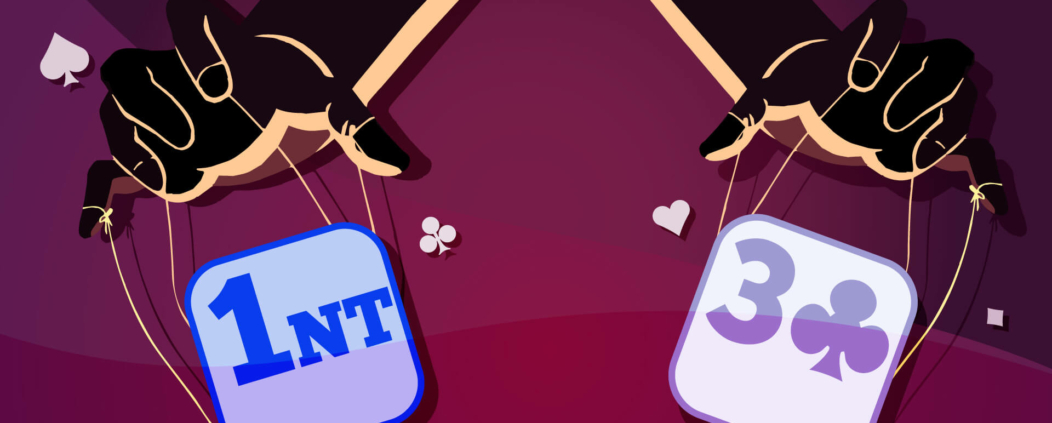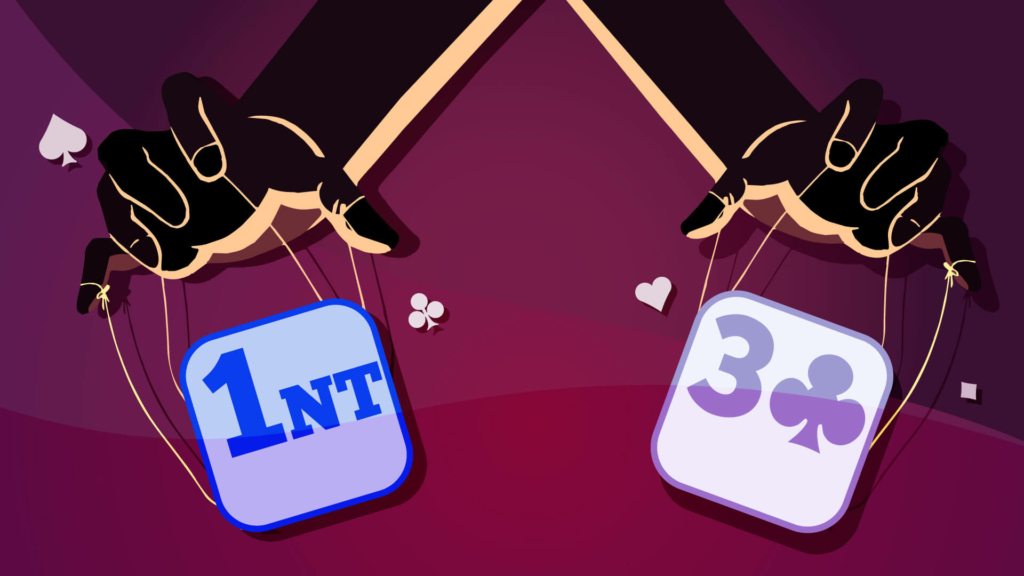
Double Stayman and its consequences

Bridge changes, constantly. Even the most basic convention, Stayman, must evolve in order to adapt to the changes. Now that it is common to open 1NT with a five-card major, you have to be able to find an eight-card fit. To do so, it was necessary to add a second Stayman to the classic one, which itself is slightly modified: Puppet Stayman.
1- Preambule
The increase of 1NT openings with a five-card major and the search for confidentiality (avoiding unnecessarily describing opener’s distribution) led to improving the response system facing 1NT openings with the introduction of double Stayman: the usual Stayman of 2♣ and a Puppet Stayman of 3♣.
Confidentiality
The sequence:

It reveals four Hearts in the hand of the future declarer, solely at the advantage of the defense.
Discovery of a 5-3 fit
You all, like me, have responded 3NT over 1NT with:
♠ K105
♥ K105
♦ AJ984
♣ 83
… not a success opposite:
♠ QJ984
♥ AQ3
♦ KQ5
♣ Q9
The 1NT opening meets all the criteria that you remember from your courses (never 17HCP, no small doubleton, rather three cards in the other major); the 3NT response is obvious, there is no culprit, and the board will probably be a tie when it comes to scoring… unless your opponents play Puppet Stayman.
2- Puppet Stayman
A. Definition
The response of 3♣ to the 1NT opening is a particular Stayman:
- Looking for five-card majors in opener’s hand, but it also allows you to find a 4-4 fit without revealing, in case of failure, opener’s four-card major.
- Game-forcing. 9+HCP without upper limit.
- Balanced distribution, zero or one four-card major. No singleton, not both four6card majors. Forcing de manche. 9+H sans limite supérieure. Distribution régulière, zéro ou une majeure quatrième. Ni singleton, ni les deux majeures quatrièmes.
Examples:
You need a Funbridge Premium or Premium+ subscription to keep reading.
To read the rest of the article, you must be subscribed to the Premium or Premium+ offer.




High level, good stuff!
Typo + translation problem here.
Balanced distribution, zero or one four-card major. No singleton, not both four6card majors. Forcing de manche. 9+H sans limite supérieure. Distribution régulière, zéro ou une majeure quatrième. Ni singleton, ni les deux majeures quatrièmes.
Fantastic. Article. Very helpful!